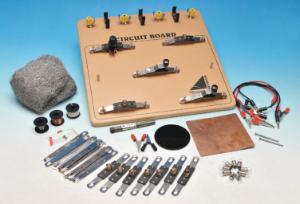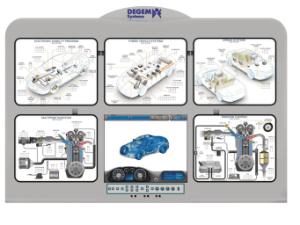A Roadmap of Self-Driving Car Science; Plus a free handout from AccessScience
Access to this content is available to Ward’s World readers for free from McGraw Hill’s AccessScience, an award-winning, digital STEM resource that provides immediate, authoritative answers to students’ thirst for scientific knowledge on topics such as climate change, virology, pollution, and more. Ward’s World and McGraw Hill have partnered to offer educators a no-obligation, free trial subscription to this product. Request your free trial today and discover how valuable AccessScience can be for you and your students.
High School
An autonomous car (aka self-driving) can sense its environment and operate without human involvement. The science behind self-driving cars is the perfect “vehicle” to prepare your students for the world of tomorrow while revving up their curiosity for STEM concepts. Students will be driven to learn the benefits and challenges of this evolving technology!
What are the benefits of autonomous cars?
Encourage students to consider how the three key autonomous vehicle technologies (i.e., sensors, connectivity, and software/control algorithms) support potential benefits.
Reduced accidents
According to the NHTSA, a whopping 90% of vehicle accidents are caused by human error. The top driving mistakes humans make are1:
1. Distracted driving (e.g., texting while driving is 6x more likely to cause an accident than driving drunk!)
2. Speeding
3. Failure to use turn signals
4. Rushing through yellow lights
5. Poor steering wheel techniques
6. Slow reaction times
7. Failure to use side mirrors or driving in blind spots
8. Driving while tired
9. Not yielding to oncoming vehicles
10. Improper use of headlights and high beams
Autonomous car enthusiasts contend that the self-driving technology safety features (e.g., Automatic Emergency Brakes, Adaptive Cruise Control, Blindspot Detection) will dramatically reduce the number of accidents caused by human error.
Assist people with disabilities
The ability to drive represents more than simply being able to travel from place to place. Access to transportation represents freedom and independence. Hopefully, engineers can achieve their goal of designing autonomous car technology that fully accommodates all riders, including those with disabilities. Considering all the possibilities that driverless car technology presents to remove barriers to personal transportation is exciting.
Reduce traffic congestion
Researchers are hoping that self-driving vehicles can reduce congestion in cities. Still, a lot depends on how manufacturers roll out the vehicles; without careful planning, autonomous vehicles could actually increase congestion! On the positive side, self-driving vehicles could reduce and improve traffic jams by guiding human-controlled vehicles on the road. For traffic to flow smoothly, drivers must maintain a consistent speed and distance from other vehicles. However, humans tend to speed up to meet the car in front of them, causing phantom traffic jams. The hope is that automated and human-controlled vehicles could work collectively to smooth traffic flow.
The bonus is that if automated vehicles can reduce stop-and-go traffic, that would help reduce gas usage by 42%.2
Download McGraw Hill’s AccessScience article, Self-driving Cars, to develop your lesson plans that help students understand the key technologies, issues, and impacts of automated driving. The free download also includes assessment questions and answers you can use to test student understanding.
1. DriveSave Online 2. Civil and Environmental Engineering UC Berkeley
Recommended Products
[StartProductBlock]

Fundamentals of Physics Electric Circuits
Kit has everything needed to investigate simple, series, and parallel circuits, Ohm's Law, and resistivity.
[EndProductBlock]
[StartProductBlock]

Ward's® Vehicle Kit
Students design and build cutting-edge vehicles to investigate stored energy from sources like rubber bands or mousetraps.
[EndProductBlock]
[StartProductBlock]

Advanced Autotronics Simulator
The unique training system houses five plug-in simulator modules and a central control module. Virtual instruments, including a digital multimeter and oscilloscope, are simulated on the LCD monitor and provide realistic diagnostic measurement facilities.
[EndProductBlock]
